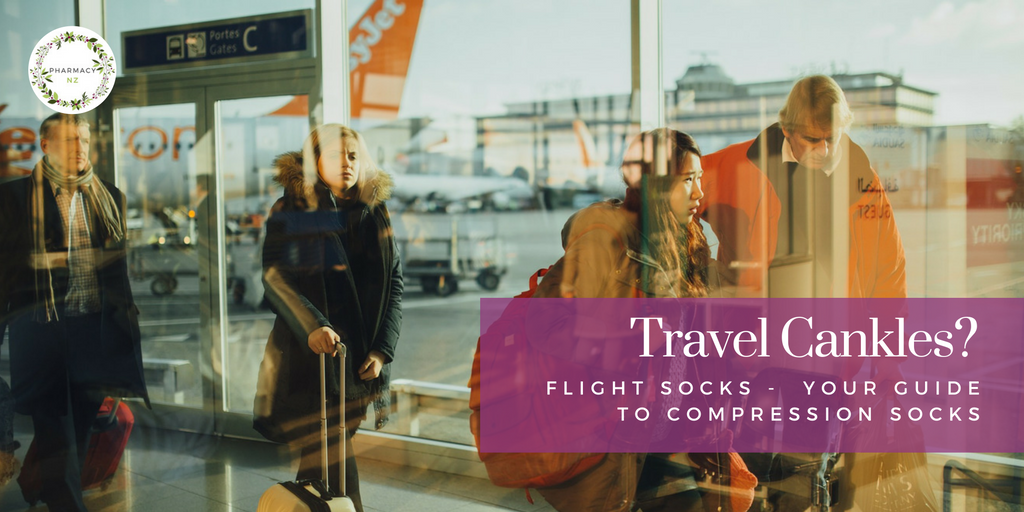Leaving on a jet plane? Are you escaping somewhere fabulous? Does that make you worried about having fat ankles when you arrive? I have been there – and it sucks. The last time I travelled to Europe, I spent more than 20 hours seated in economy class with only a few short stopovers. By the time I got off the plane my ankles were huge! So I resolved to get a pair of flight socks for the returning leg.
What happened when I didn’t use flight socks on a long haul flight
After the flight I ended up lying with my legs elevated up the wall, trying to get the fluid out of my ankles. My shoes barely fit, and I ended up with blisters from trying to cram my abnormally swollen feet into my regular sized shoes. This then inhibited my ability to walk around and enjoy the beautiful cities I had invested all this time and energy to get to. That is why compression socks are a great idea (especially on long haul flights, because New Zealand seems to be so far away from everything!).
 So who will benefit from using flight socks?
So who will benefit from using flight socks?
Long haul air travel is associated with certain discomforts. Especially if you are on a tight budget and can only afford economy class. The tight leg room constrict any comfortable movement leading to aches and pains. This can get even worse if you have an existing medical condition. People who have had a recent surgery or have heart problems are most at risk. And one of the dreaded health hazards of long distance trips is Deep Vein Thrombosis (DVT). As long as you have to sit for more than 4 hours with constricted leg movement, you are at risk.
What are the main benefits of using flight socks?
Flight socks or compression socks help protect against the formation of blood clots or DVT. But they also offer a wide range of benefits to those who are not at risk of developing blood clots. They help: 1) improve blood flow, 2) prevent swollen ankles and tired aching legs, 3) restore healthy blood circulation, 4) relieve leg discomfort.
Do you want to know more about DVT?
What is Deep Vein Thrombosis?
Deep Vein Thrombosis, or DVT, happens when a blood clot forms in a deep long vein. These deep veins are blood vessels that connect through the calf and thigh muscles. As opposed to what you see just on the surface of the skin.
But why is it linked to long-haul travel?
A long trip is when you travel for more than four hours either by a plane, train, bus or car, and some think that it increases the risk of developing DVT. Perhaps it is the condition of the passenger that makes him or her susceptible. Sitting still without much movement for a long period of time can constrict blood flow. Hanging your legs down for a long period collects the blood in the legs. Both of these can possibly lead to blood clots.
Are all travellers at risk of developing DVT?
Not all travellers are going to develop DVT. In fact, DVT related to travel is a very small percentage of cases. However, the following individuals are at higher risk of developing DVT:
- Those who have had an operation in the past 2 months.
- If you are pregnant.
- Previously suffered from DVT or pulmonary embolism (PE).
- Obese
- Cancer patient.



 So who will benefit from using flight socks?
So who will benefit from using flight socks?




